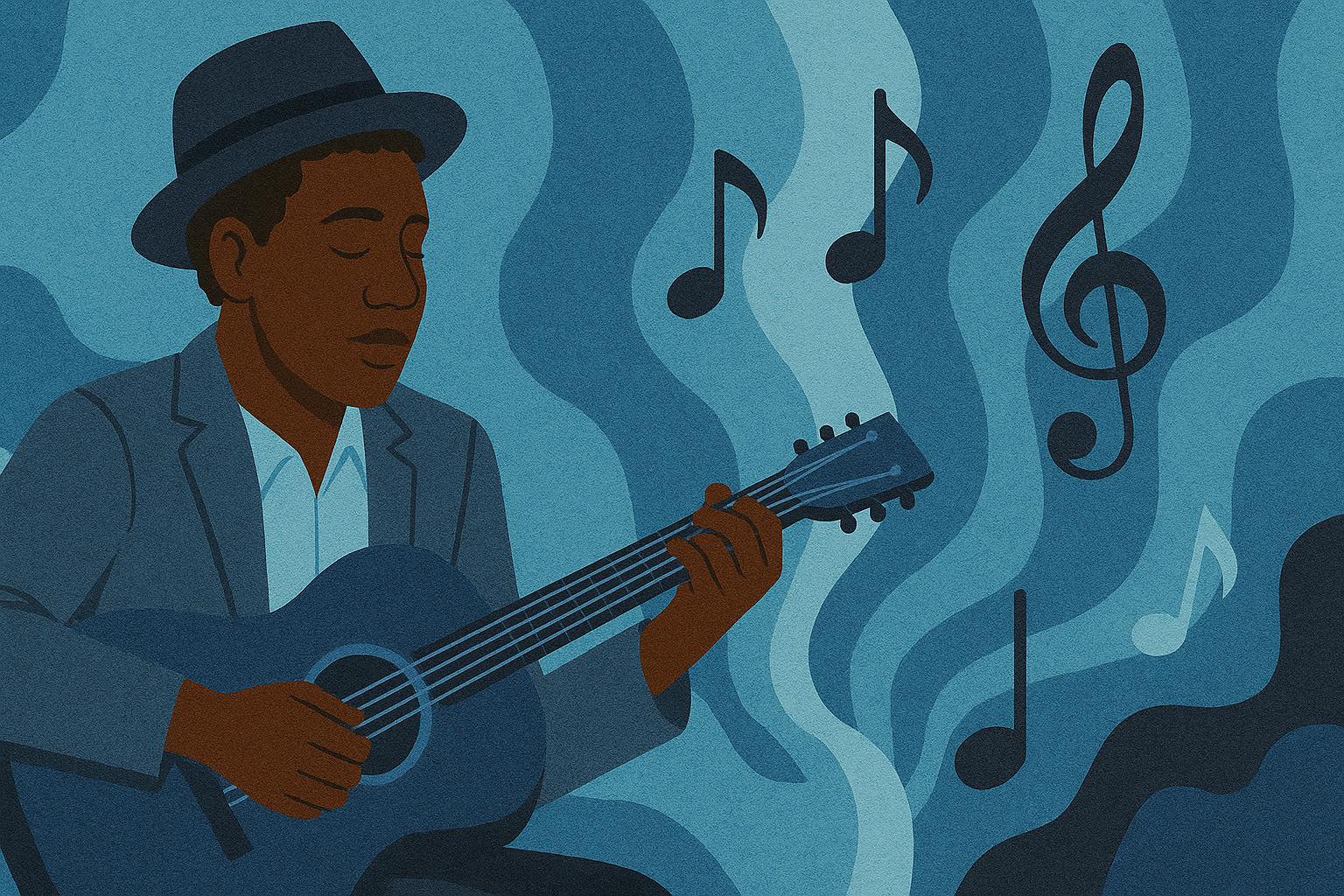The Blues is one of the most foundational genres in modern music, and its impact stretches across nearly every major genre today — from rock and hip hop to pop, country, and R&B. Born in the late 19th century from the African American experience, particularly in the Deep South, the blues captured themes of sorrow, survival, love, injustice, and resilience — and introduced musical techniques that reshaped global music.
Here’s how the Blues impacted modern genres:
Rock and Roll
- Directly evolved from the blues.
- Early rock pioneers like Chuck Berry, Little Richard, and Elvis Presley borrowed blues chord progressions (like the 12-bar blues), rhythms, and lyrical themes.
- British rock bands like The Rolling Stones, Led Zeppelin, and The Beatles idolized American blues musicians like Muddy Waters and Howlin’ Wolf, incorporating their riffs, phrasing, and emotion into rock.
Hip Hop
- Though hip hop uses beats and samples rather than traditional instruments, its themes of struggle, injustice, and personal storytelling reflect deep blues influence.
- Hip hop artists often sample blues, soul, and funk records, or directly reference blues themes (e.g., Jay-Z’s “The Blueprint”, Kendrick Lamar’s storytelling).
- The blues’ emphasis on self-expression and emotional honesty is at the heart of lyrical hip hop.
R&B and Soul
- Rhythm & Blues literally evolved from the blues, adding more groove, gospel influence, and vocal harmonies.
- Artists like Ray Charles and Sam Cooke brought blues into new forms that became soul, setting the stage for Motown and modern R&B.
- Contemporary R&B artists — from Alicia Keys to Anderson .Paak — still draw on blues scales, vocal phrasing, and themes.
Pop Music
- Many pop ballads borrow bluesy chord progressions, emotional lyrics, and expressive vocals.
- Artists like Adele, John Mayer, and even Lady Gaga incorporate blues inflections in their songwriting and delivery.
- The blues helped shape the structure of verse-chorus songwriting, widely used in pop.
Country Music
- Country music and blues developed side-by-side in the American South, often influencing each other.
- Early country artists like Jimmie Rodgers and Hank Williams used blues chords, melodies, and vocal styles.
- Today, genres like alt-country and Americana often blend blues and folk traditions.
Jazz
- Blues was a core building block of jazz, especially early forms like Dixieland and swing.
- Jazz musicians regularly use blues scales, 12-bar blues form, and blues-infused improvisation.
- Iconic compositions like Miles Davis’s “All Blues” and John Coltrane’s “Blue Train” are direct tributes.
In Summary:
The Blues gave modern genres:
- Musical tools: 12-bar form, blue notes, call-and-response, expressive bends
- Emotional content: themes of struggle, resilience, love, loss, and identity
- Artistic ethos: honesty, personal storytelling, and improvisation
Modern music, whether it’s a rock anthem, rap verse, country ballad, or pop hook, often carries the soul of the blues — it just wears new clothes.
